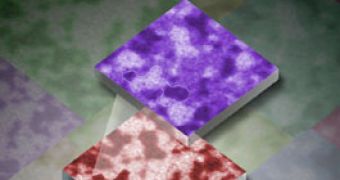Have you ever heard of magnets making noise? It's called the Barkhausen effect and it's a name given to the noise in the magnetic output of a ferromagnet when the magnetizing force applied to it is changed.
It's easy for scientists to measure the minute thermal fluctuations in the magnetization of ferromagnetic materials like iron. It's much more difficult to measure the noise produced by antiferromagnetic materials.
These are materials presenting a different manifestation of magnetism and are relatively uncommon, the most usual element of this type being chromium. Because the magnetic moments of atoms in close vicinity are pointing in opposite directions, they have no bulk magnetization and thus it's impossible to detect the fluctuations that cause the noise.
For the first time, physicists led by Oleg Shpyrko, at Argonne National Laboratory near Chicago, have managed to hear this noise on the antiferromagnetic domain walls in chromium, with the help of a beam of coherent X-rays from Argonne's Advanced Photon Source.
To do this, they took advantage of the fact that chromium owes its antiferromagnetism to its conduction electrons and not to the atoms themselves. Thus, even if the x-rays can't directly measure the "spin density waves" of the electrons, they were able to detect the commensurate electron charge density wave that accompanies each SDW, through a technique called X-ray photon correlation spectroscopy (XPCS).
What they did was to scatter a coherent beam of X-rays from a piece of chromium, so that would produce an interference pattern called a speckle that was captured by a CCD camera over a period of several hours.
For the first time, by simply watching how the speckles changed in a period of time, the scientists observed changes in the antiferromagnetic domains over distances a small as 1 ?m.
Practical applications of antiferromagnetic materials are the read heads for magnetic storage devices and could also be used in spintronics, to make use of both the spin and charge of the electron to process information.

 14 DAY TRIAL //
14 DAY TRIAL //